How to properly prepare cucumber seeds for planting?
For a cucumber seed to sprout and grow into a strong, viable plant, you need to make some effort. Competent preparation of cucumber seeds for planting is the key to a successful harvest. Practice has proven that these techniques affect both the amount of "zelents" and their taste.
Discarding empty seeds
You need to start by selecting empty seeds. Yes, in a bag you can often find them in the amount of only 10-12 pieces. But even among such a small amount, there are empty, incomplete seeds, and therefore they must be sorted.
The selection is still carried out in the tested "old-fashioned" way.
- Add a tablespoon of salt to a liter of water, mix.
- Dip the cucumber seeds into the solution.
- We merge those that surfaced: they are incomplete and unsuitable for landing.
- The rest are washed and dried on a napkin.
It is advisable to immediately calibrate. It can happen that the size of the seed is different for the same variety. This does not mean that small seeds are bad. Just sort them out. When planting, small ones will be planted to a depth of 1 cm, and large ones - up to 1.5 cm. If you have a large number of seeds in stock, then use only large ones.
Advice
When buying planting material, pay attention not so much to the attractive appearance of the package as to the shelf life of the seeds and their quantity. Use seeds that are 2-3 years old, they germinate best.
Rules for preparing seeds for open ground
Before sowing, a number of procedures are carried out to ensure that the small seed grows stronger:
- check for fullness of seeds;
- selection and calibration;
- disinfection, since pathogens may be on the surface of the seed;
- warming up to get quick shoots;
- top dressing;
- germination to get seedlings faster;
- hardened for resistance to temperature changes.
We checked for completeness and weight, calibrated the seeds for planting, and continue further development. We carry out the disinfection procedure. To do this, we disinfect our seeds in a dark purple (strong) solution of potassium permanganate. We put them in the solution for 15-20 minutes, then rinse thoroughly.
The processed material is heated in two ways. If you prepare seeds for planting in advance, then they can be held for a month next to heating devices at temperatures from +25 to + 28 ° C. In the case when there is no time to delay the procedure, it is enough to warm up for 2-3 hours at + 50–55 ° С. Thanks to this treatment, the seeds do not just sprout amicably and well - many female flowers subsequently form on the plants, and the harvest can be obtained much earlier.
Advice
Some gardeners practice an interesting trick: they carry a bag of seeds near their bodies for about a week, warming them with their warmth. “With this method, the harvest is excellent,” they assure.
Further, it is important to feed the seeds. In gauze bags, cucumber seeds are soaked in a nutrient solution for 12 hours. Use a solution of wood ash or nitrophoska (1 tsp. Per liter of water). Natural stimulants can also feed the seed, such as sodium humate or Epin.
It is believed that melt water is a good stimulant for further growth. But here you should be guided "by the situation": if the area is ecologically clean, then the melt water is really useful.
After feeding, the seeds are washed and left in a warm place at a temperature of + 25 ° C until they swell. They will hatch on the second day. It is not necessary to germinate them strongly. It is enough for small roots up to 1-2 mm in size to appear.
We proceed to the hardening procedure: we leave the sprouted seeds on the lower shelf of the refrigerator for a day. It would be enough. Everything is a cucumber seed, after going through many trials, it is ready for sowing.
Advice
If you have purchased hybrid seeds, where on the packaging after the name of the variety is "F1", then all these manipulations are not necessary. Typically, these seeds have already been processed. It is enough to feed and germinate them by selecting full-weight seeds.
Features of seed preparation for indoor
The procedure for preparing a cucumber seed for planting in a greenhouse does not fundamentally differ from the preparation for planting in open ground. But the greenhouse has a special microclimate, where there is overcrowding of plantings, high humidity, and a different temperature regime.
Based on this, we will focus on several important points.
- Infections and fungal diseases spread faster in the greenhouse than outdoors, so disinfection is one of the most important techniques. In a gauze bag, the seeds are immersed for 20 minutes in a strong solution of potassium permanganate or boric acid... It is then important to rinse them in running water and dry them.
- Small seeds can be processed under a UV lamp for 2-3 minutes. Only then should they be kept in a closed bag, without leaving them in the open air.
- Disinfection can be done in garlic peels. The husk is poured with hot water for a couple of hours, filtered and the seed is placed in the broth for an hour, washed.
- Warming remains an important procedure so that a large number of female flowers form on the plant. We sew a cloth bag, put the seeds into it and hang it on a pipe near the battery for a month. But it is worth remembering that with rapid heating, there is a possibility of overheating.
- Top dressing won't hurt either. It is better to use a natural substance such as wood ash, which contains many beneficial substances. It is enough to leave the seeds in the solution overnight.
- Germination is carried out with any growing method and accelerates the harvest. We lay out raw cheesecloth on a plate, pour out the seeds and wait 2-3 days. After that, the seeds are ready for sowing.
Advice
When germinating, do not completely fill the seeds with water, because in addition to moisture, they also need air. In water, they can deteriorate and not germinate at all.
Preparing cucumber seeds for planting requires additional time and effort. Many people neglect these techniques when sowing dry, untreated seeds in open or closed ground. Of course, even with this approach, the seed will sprout and grow. But with proper processing, the yield will be larger and the fruits tastier. Try it and see for yourself.
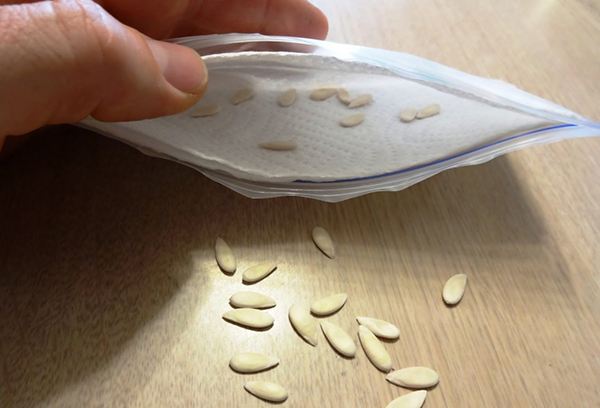
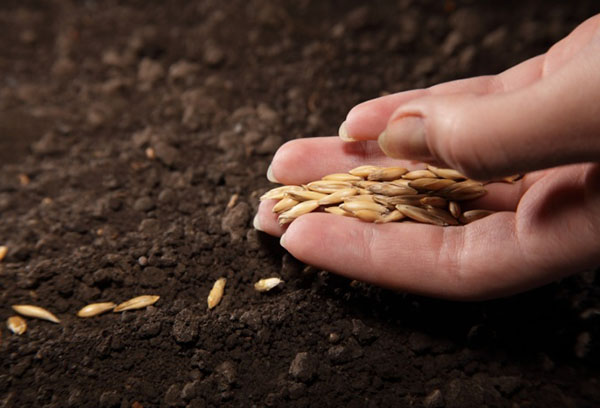
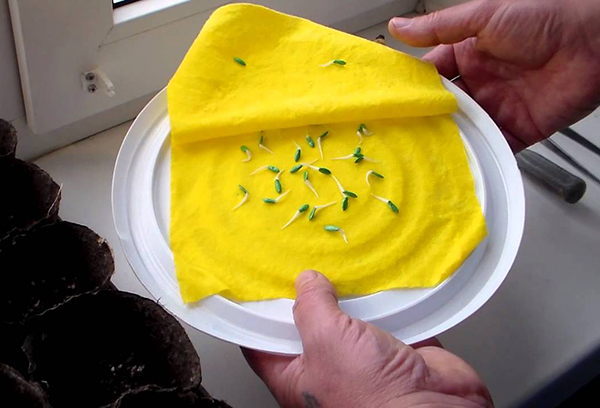

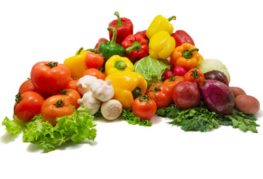
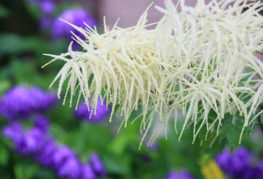
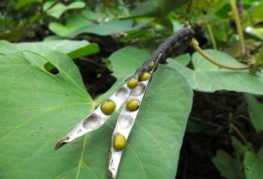
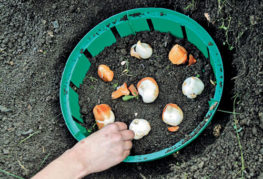
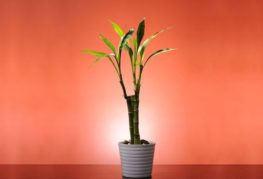
and will be published shortly.